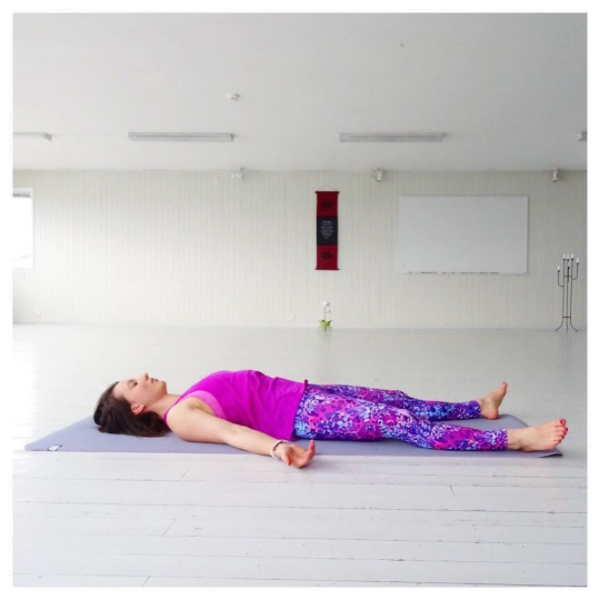
Savasana is the cult favorite pose among yoga practitioners, and it’s easy to see why. After a rigorous, sweaty workout, nothing feels better than a pose that manifests deep relaxation and gratitude. But savasana, or “corpse pose,” is much more than reclining back on one’s mat. The Hatha Yoga Pradipika, a fifteenth-century text on hatha yoga, describes savasana thusly: “Lying flat on the ground with the face upwards, in the manner of a dead body, is savasana. It removes tiredness and enables the mind (and whole body) to relax.” This last part–removing tiredness and guiding the mind towards relaxation–is essential to the pose, yet most practitioners don’t appreciate it fully.
Contrary to popular thought, savasana is much more than simply resting to catch your breath after yoga practice. It involves sensory withdrawal, so much so that the mind enters a deep meditative state. Since it takes many years of practice before savasana takes on this spiritual significance, here are a few ways to get you closer to yogic bliss.
1. Try counting. My teacher recently suggested that I try counting in savasana. Specifically, he told me to count to 108. Here’s why: the number holds a holy and auspicious meaning in Hinduism (for example, malas contain exactly 108 beads). If the number speaks to you (or any number, for that matter) try counting as you lay in savasana.
2. Use props. Some yoga teachers discourage the use of props in savasana, but they can be very restorative for people dealing with injuries or experiencing general discomfort in the pose. When my lower back hurts after backbends, I like to use a bolster underneath my knees so that my pelvis is flat on the ground. Similarly, you can place a yoga block in between your shoulder blades for a heart opener. Essentially, you want your body to be so relaxed that your mind is able to enter a deeper state of meditation.
3. Lay in darkness. This might be pretty obvious, and most classes do try to dim lights at the end of class, but its importance really cannot be overstated. Light stimulates the senses, and as I said before, the goal of savasana is to deprive oneself of the inherent distractions that are attached to vision, touch, or smell. If you practice at home, try dimming the lights and adding a burning candle to your final relaxation pose.
4. Don’t rush. As much as you probably want to get on with your day, it’s crucial that you spend a good amount of time in savasana. My teacher recommends no less than five minutes, but ideally, it should be as long as you need to become fully relaxed. Of course, most of us are busy with school, work, or other obligations, so spending a long time in savasana isn’t really something we prioritize. But the truth is that mindful rest is just important as physical exercise. If you can, push your plans back by 5-10 minutes so that you won’t feel rushed after class.
5. Listen to your breath. In the yoga practice, our breath is coordinated with our movements. This syncing of breath and movement should extend to your final pose. Simply noticing the breath will have a calming effect on the whole body and allow you to enter a deeper state of relaxation. If you start to hear students around you rolling up their mats or chatting, try to tune into your breathing and let the noise drop away. Easier said than done, I know, but I promise that your savasana will be better off for it.
Have you tried any of these tips for a more meditative Savasana?
Also by Molly: Perfect “Yoga Body” Doesn’t Exist. How to Avoid Comparing Yourself
These 4 Yoga Poses Will Challenge and Sculpt Your Entire Body
Related: The Science of Stress Management and Yoga
Get more like this–sign up for our newsletter for exclusive inspirational content!
__
Photo: Lumiyoga via Instagram




